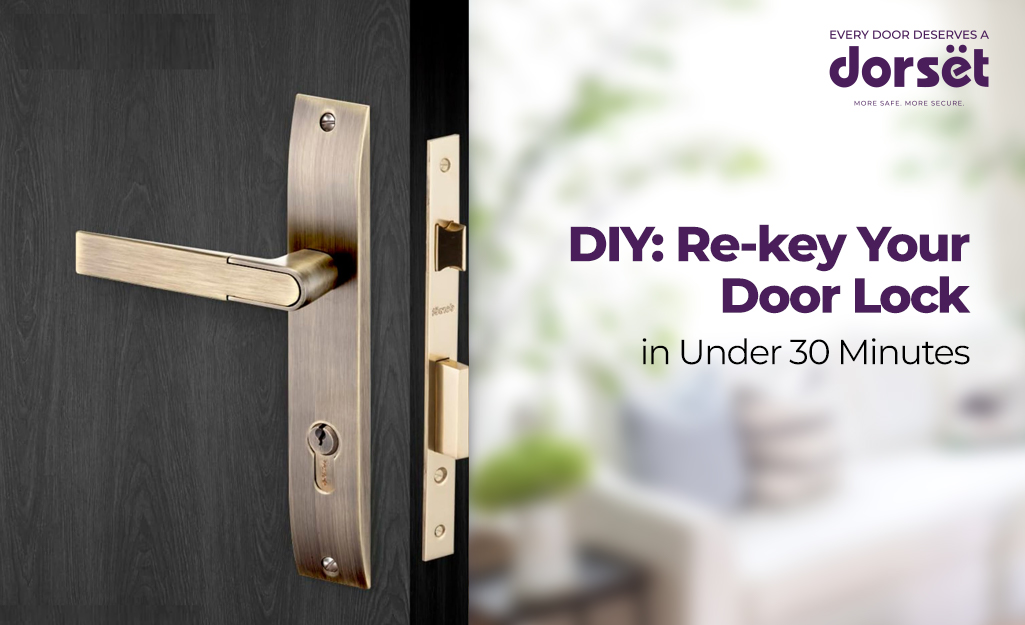
Replacing all your locks can be expensive and time-consuming. But there's a smarter, more economical approach: re-keying your existing locks.
Re-keying a lock means changing the internal mechanism so that your current keys no longer work. Rather, a completely new set of keys will operate the door lock perfectly. It's like giving your lock a completely new identity whilst keeping the same physical hardware in place. It’s a simple and easy process and once you understand it, you'll wonder why you ever considered it beyond your capabilities.
Understanding When Re-keying Makes Sense
Before diving into the technical aspects, it's worth understanding when re-keying is the right solution versus other security options. Re-keying works brilliantly when your locks are in good condition but you need to change who has access. This makes it perfect for new homeowners, situations where keys have been lost or stolen, or when you need to remove access for former tenants, employees, or family members.
However, re-keying isn't always the answer. If your locks are old, damaged, or of poor quality, replacement might be the better long-term investment. Similarly, if you're looking to upgrade your security level significantly, moving from basic locks to high-security or smart lock systems makes more sense than re-keying.
Gathering Your Re-keying Tools
Success in any DIY project starts with being properly prepared, and re-keying is no exception. To re-key a lock, you’ll need a re-keying kit that fits your lock type. The kits usually include different pin sizes, springs, and tools to take apart and put back the lock.
The must-haves:
- A rekeying kit that matches your lock
- Your original key
- Screwdrivers (usually Phillips or flat-head)
- Pliers for handling small parts
- A follower tool to safely remove the cylinder
- New keys or blanks to cut
Make sure you have a clean, well-lit surface to work on. The parts are really small, some even smaller than a grain of rice.
Also, have your new key blanks ready. Most hardware stores or keymakers can cut them for you. Just make sure the cut is accurate, or the whole process may not work right. It’s smart to have a few extra pins and springs too as they’re tiny and easy to lose.
Step-by-Step: Removing the Lock Cylinder
- Keep the door open before you begin. This ensures you won’t get locked out mid-project.
- Unscrew the outer casing using the appropriate screwdriver.
- Take off the knob or handle to reveal the lock cylinder inside.
- Gently remove the lock cylinder, turning the key slightly if needed to slide it out.
Every door lock is a bit different, so check the instruction manual if you’re unsure. If your door has a Dorset Euro profile cylinder, just remove the side screw on the door edge and turn the key slightly to slide the cylinder out.
Changing the Pins Inside the Lock
This is where the actual rekeying happens:
- Insert your current (old) key into the cylinder.
- Turn the key to the unlock position so you can remove the cylinder plug.
- Use your follower tool to push the plug out while keeping pressure on the pins and springs this keeps them from falling out or flying across the room.
- Take out the old pins and match the new ones based on your new key’s pattern. A pinning chart helps with sizes.
- Insert new pins, making sure each one sits flush with the plug when the key is inserted. That alignment is key to smooth turning.
- Reinsert the driver pins and springs in the top chambers.
Testing and Reassembling
Before putting everything back together, test the cylinder:
- Check your door lock with key by turning it both directions
- It should turn smoothly with no sticking or resistance
- Your old key should no longer work
If it feels tight or jammed, double-check that the pins match the new key correctly and that nothing’s upside-down or out of place. If a pin sticks out too far, the lock won’t turn. Too low, and the lock may jam. Take your time aligning everything properly.
Once everything works well:
- Slide the plug back into the cylinder housing
- Screw the lock back onto the door
- Test again with the key in the actual door to confirm everything is aligned
Apply a bit of graphite powder (not oil) to keep the movement smooth.
Troubleshooting Common Issues
DIY rekeying is doable, but not always the best choice. Get expert help if:
- Your rekey kit doesn’t match your lock.
- The lock feels old, rusty, or jammed.
- You're working with smart locks or high-security systems.
- The lock is part of a master key system.
For many Indian homes, basic rekeying is an easy project. But if it involves something more complex like digital locks or antique hardware it’s better to hire a certified locksmith.
The Confidence That Comes with Control
Rekeying is a smart, budget-friendly way to regain control over who can access your space. With the right tools and a little patience, you can update your door lock without replacing it entirely and paying for the entire door lock price again and again. It’s practical, efficient, and ideal for anyone who values both security and simplicity.
This skill also becomes increasingly valuable over time, whether you're helping family members, managing rental properties, or simply maintaining your own home security. With practice, what initially seems like a complex process becomes an easy task you can do on your own quickly and confidently whenever you want.
Looking for reliable locks that are easy to maintain or rekey? Choose Dorset! Our BIS-certified products are trusted across India, and with a Superbrand classification, you know you don’t need to worry about quality!